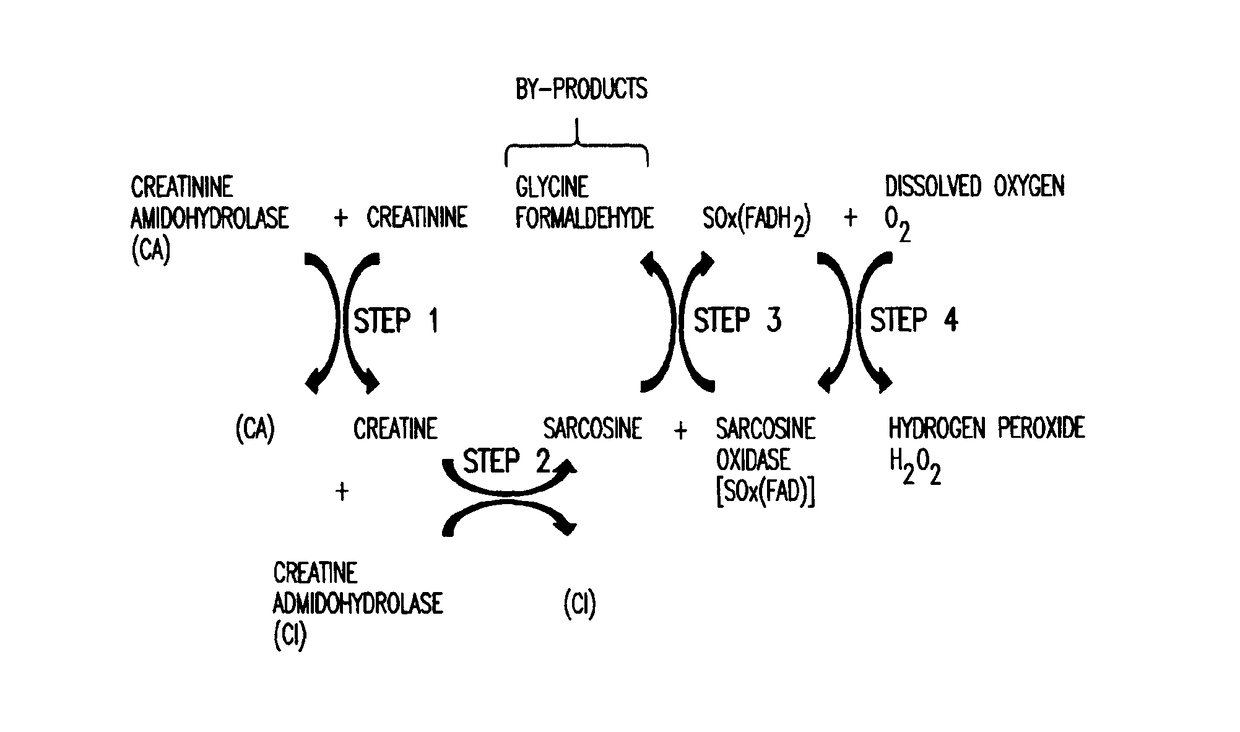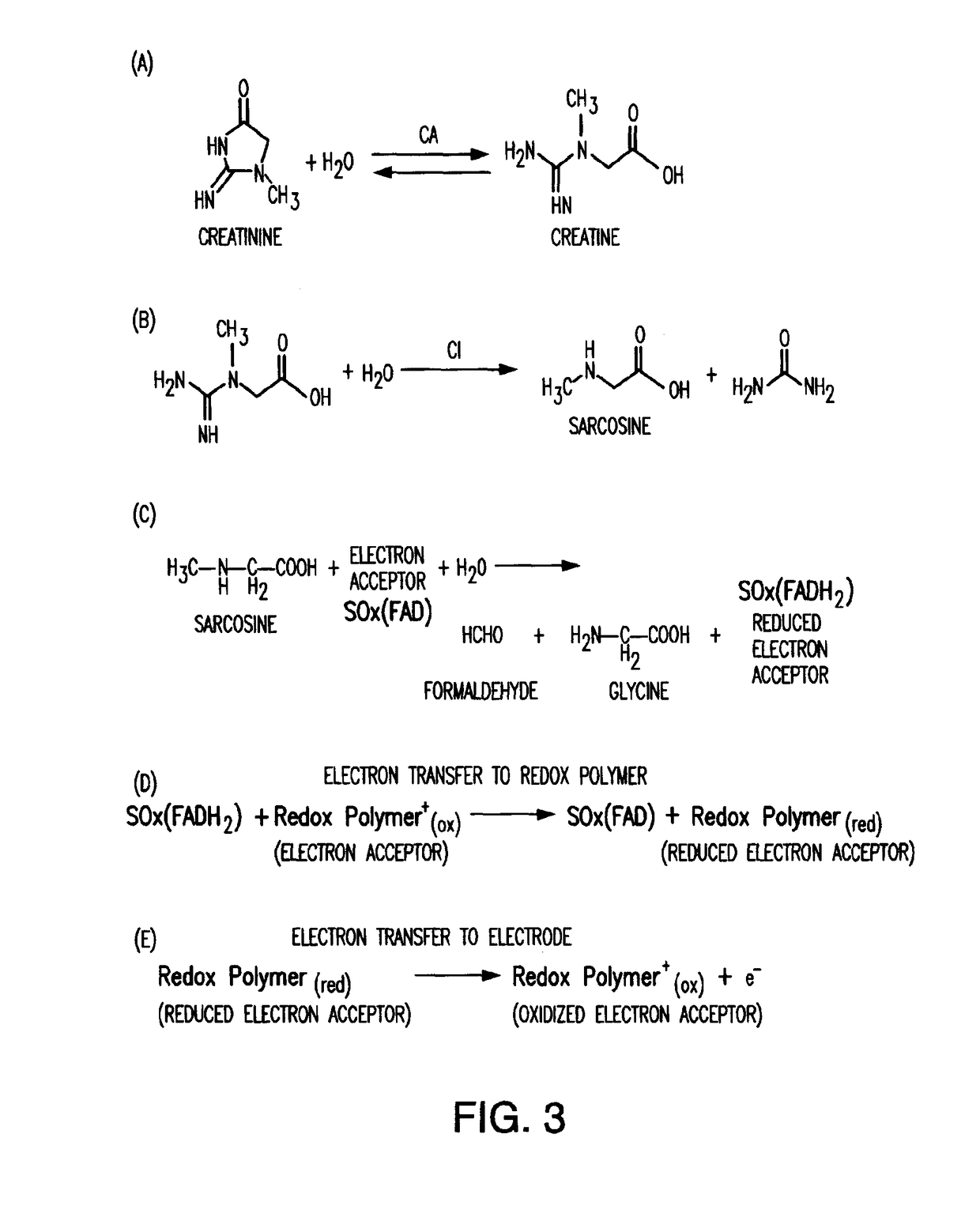Amperometric Creatinine Biosensor With Immobilized Enzyme-Polymer Composition And Systems Using Same, And Methods
a biosensor and amperometric technology, applied in biochemistry apparatus and processes, instruments, biological material analysis, etc., can solve the problems of inaccurate determination of creatine concentration in the sample, limited analytical methods, and potentiometric biosensors for creatinine, etc., to achieve reduced potential range, high current response, and high potential range
- Summary
- Abstract
- Description
- Claims
- Application Information
AI Technical Summary
Benefits of technology
Problems solved by technology
Method used
Image
Examples
Embodiment Construction
[0019]The present invention relates to an amperometric creatinine biosensor that uses a non-diffusing redox polymer to mediate electron exchange between a biological element comprising enzymatic biocatalysts, and an electrode or transducer surface. A series of hydrolase and redox enzymes can be used to convert creatinine into a form from which an electrical current can be generated and carried by the redox polymer to an electrode where it is detected and converted into a measurable signal. The enzymatic biocatalysts are attached to the electrode surface with the crosslinked redox polymer. The redox polymer functions as a non-diffusing electron mediator and as a crosslinkable carrier material for immobilizing active enzymes and the redox polymer at the electrode surface.
[0020]Methods also are provided for detecting or monitoring creatinine concentration in a sample fluid. The sample fluid can be, for example, a treatment fluid associated with the administration of a medical or therap...
PUM
| Property | Measurement | Unit |
|---|---|---|
| Mn | aaaaa | aaaaa |
| Mn | aaaaa | aaaaa |
| pH | aaaaa | aaaaa |
Abstract
Description
Claims
Application Information
 Login to View More
Login to View More - R&D
- Intellectual Property
- Life Sciences
- Materials
- Tech Scout
- Unparalleled Data Quality
- Higher Quality Content
- 60% Fewer Hallucinations
Browse by: Latest US Patents, China's latest patents, Technical Efficacy Thesaurus, Application Domain, Technology Topic, Popular Technical Reports.
© 2025 PatSnap. All rights reserved.Legal|Privacy policy|Modern Slavery Act Transparency Statement|Sitemap|About US| Contact US: help@patsnap.com



